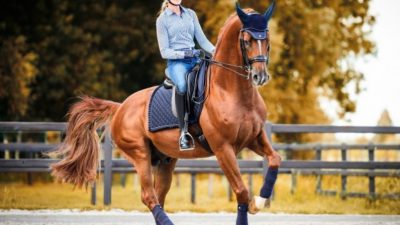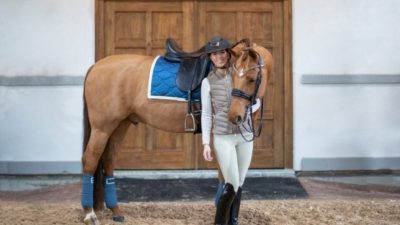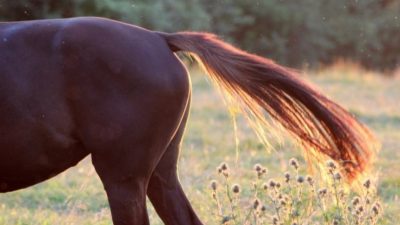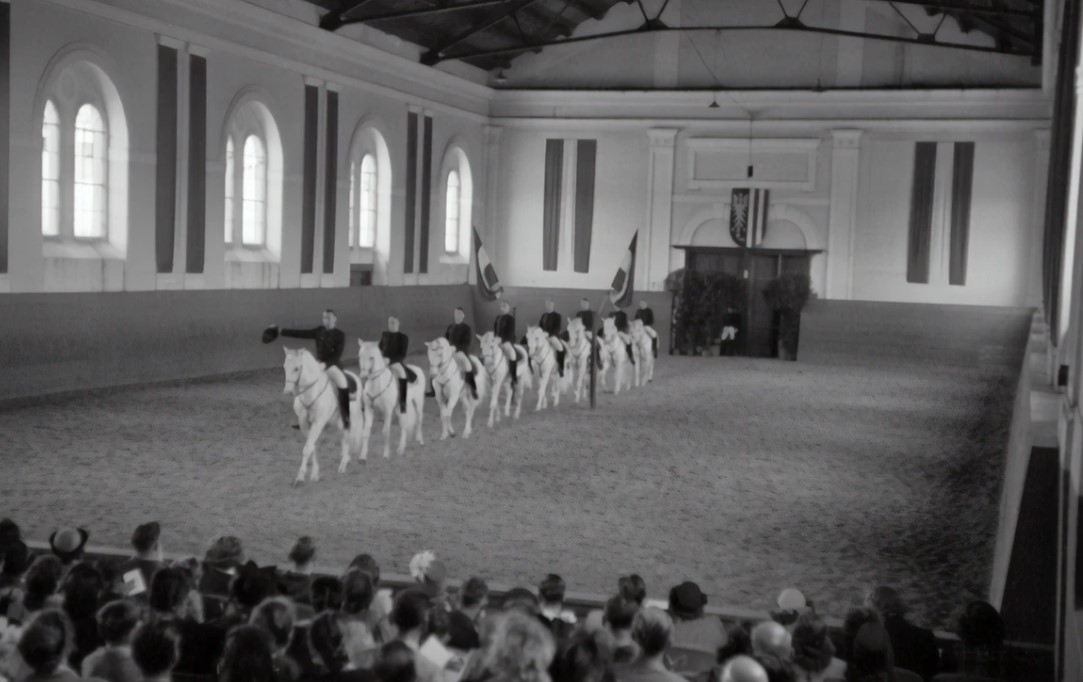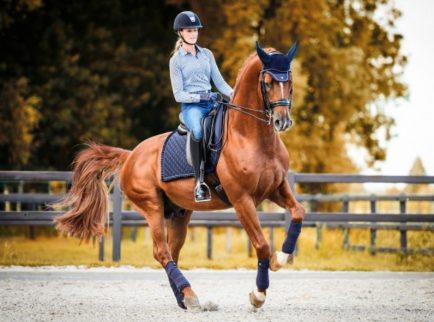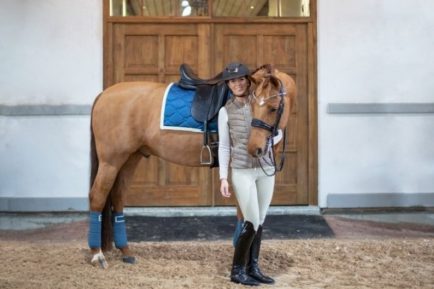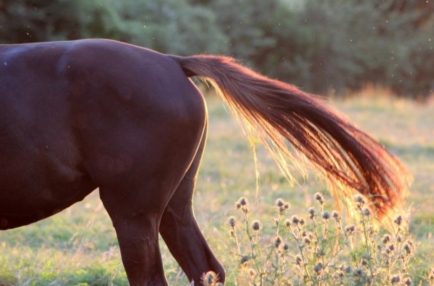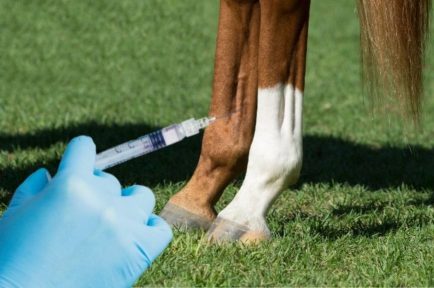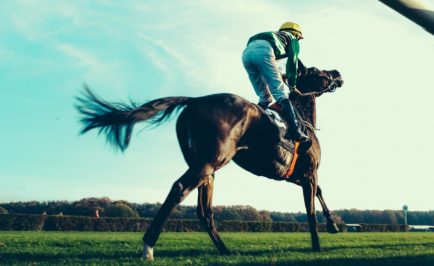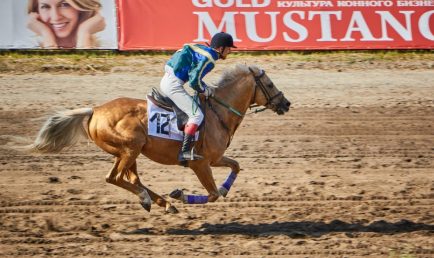Having a good seat is a way of life at the Spanish Riding School (SRS). But getting a good seat isn’t an easy task, nor is it a quick one. For most of us seeking to ride in harmony with the horse, spending a few years riding without stirrups or reins in longe lessons might seem a little unrealistic, but it’s just the way things are done in an institution that has preserved the highest standards of classical riding since 1572.
At the core of the SRS program is a constant focus on bettering the rider. A perfect position is not enough. A rider must be supple and effective with his aids and demonstrate the independent movement of each body part. Obtaining these goals consumes a young pupil’s first few years at the school. And even the most advanced riders at the school return to this education as needed.
According to Andreas Hausberger, a rider at the school, longe-line lessons are the primary tool used to develop a strong, secure and harmonious seat in riders of all levels. Longeing creates an optimal situation for the rider. He only needs to think about his riding while gaining fitness, coordination and body control. As the rider is put through various exercises, he learns to follow the motion of each gait. A good sense of “feel” for the horse is a natural talent that can help riders go on to be exceptional, but riders who lack that innate ability can still be trained to have skilled seats through longe lessons.
Longeing for the New SRS Recruit
Hausberger explains that when a young pupil is accepted at the school as an Eleve, the equivalent of an apprentice, he is immediately put on the longe line as that is the only way to develop his seat as the school sees fit. In fact, a clean slate is preferable to previous riding experience. The school outlines this in its requirements for entry: “Riding is not a prerequisite. It can actually be a hindrance if the applicant can already ride and has acquired a posture which does not suit the Spanish Riding School and can only with difficulty be altered.”
Eleves must earn the right to ride on their own off the longe. Their balance and posture must reach a sophisticated state before this is allowed.
An Eleve spends his first three years getting longe lessons. For the average Eleve, his initial six months is spent exclusively on the longe, and after that time, he receives regular riding lessons in addition to his daily longe work. Some remain riding only on the longe for a longer time, depending on their individual development.
New riders begin with stirrups but no reins until they have mastered the rising trot and developed strength in their legs. Then, after two or three months of this, they spend two years without stirrups or reins. “When the student becomes more experienced and the teacher can see that the student has more independence in the seat, we take away the stirrups, too,” says Hausberger.
The basic format of the longe lesson is the same day to day. It begins with a warm-up and loosening period and then leads into exercises to increase rider fitness. It finishes with exercises that test an Eleve’s command over his horse and use of his aids.
Longe sessions last 30 minutes a day. Hausberger says that this is the optimal amount of time to make daily progress without fatiguing a rider.
Young Eleves ride the school’s older stallions, while mid-level riders are put on young horses. In the final stages of his longe work, though, the Eleve returns to an older, experienced horse to learn advanced movements.
Strength and Fitness Become Suppleness
Hausberger explains that every teacher at the school has his own style for conducting a longe lesson, although they follow a similar basic structure. There is no textbook or method written down for educating a rider’s seat, he says. The SRS believes in an oral tradition, so each teacher passes on information to young riders in the way it was handed down to him from his teacher.
A typical session begins with loosening exercises that include making big circles with each arm and leg and the torso, twisting the upper body side to side, rolling the neck and shoulders and reaching the arms overhead.
In the next phase, riders progress to exercises that build strength and fitness. Hausberger is quick to point out that a good rider is not just supple; he is also very strong. A teacher’s job is to make every rider a better athlete. “You need a lot of strength to have an independent seat,” he says. Without strength in the rider’s legs and core, he lacks the independence of each body part and, therefore, is not in harmony with the horse.
From his clinics in the United States, Hausberger has observed that many American riders do not seem to understand how they need to acquire strength to achieve suppleness in the saddle. They can be too afraid of becoming stiff, so they don’t work on getting stronger on horseback, he says. But without strength and fitness, there is no looseness in the classical position. “You become more supple when you become fitter,” he explains.
To develop fitness, SRS riders do a lot of rising trot without stirrups. In the very beginning, they are allowed to hold the saddle with one hand. But after a short period, they must always ride without holding on.
Another valuable fitness tool at the SRS is vaulting exercises. Riders must vault on and off the horse in all three gaits. They sit sideways and then facing backward on the horse in all three gaits. They also perform scissor kicks (clicking their heels together over the horse’s rump) at the canter. Hausberger stressed that agility is especially put to the test because the Eleves perform all the exercises in full formal gear–tall boots, jacket and tri-cornered hat. Hausberger admits that even good riders sometimes fall off during the vaulting exercises. It’s all part of the process of becoming better.
The third phase of each lesson consists of exercises to “sophisticate” the seat: Transitions within and between gaits play a big role here. Without his stirrups or reins, the rider demonstrates walk-canter-walk transitions, for example. He also rides transitions within each gait, from working to medium to extension and back to a working pace.
Hausberger points out that when a rider is able to demonstrate these exercises without his reins, he begins to acquire the standards of classical riding that the SRS strives to maintain. The trainer constantly corrects a rider’s position throughout each session. For example, if one of his sides is dominant and his shoulder rolls forward on that side, the trainer may ask him to go in sitting trot with the dominant hand behind his back and the other hand in the rein position. After a few minutes of this correction, they will carry on with the regular work again.
The Value of Longeing the Rider
In the final stages of the first three years, the Eleve spends his time on the longe line using the reins, and he is taught to execute all the movements of advanced dressage, except for the airs above the ground. While still on the longe, he performs half pirouettes, counter canter, flying changes, piaffe and passage and all lateral movements.
Hausberger says it is important at this stage to have an older, experienced horse that is forgiving of rider mistakes. Once that work is completely mastered, the rider is no longer required to have longe lessons. However, it is an SRS rider’s duty to keep his seat honed. Hausberger says even advanced riders longe each other from time to time to ensure no bad habits have cropped up. “There is always the possibility for this,” he says. “For instance, when I have a problem with balance or independence, I ask a colleague to longe me.”
Hausberger says American riders in his clinics are waking up to the value of longe lessons. He says many clinic participants are excited to be put on the longe line at his suggestion. He encourages them to continue with longe lessons with their home instructors, though he admits that riders are at a disadvantage when they ride so much on their own without a formal school structure. Even without the formality of the SRS program, an occasional longe lesson is invaluable for riders, he says. Above all, it allows them to work on their athleticism, which is the crux of a good riding position and influence over the horse. It gives them a way to isolate exercises that improve coordination, agility and balance–necessary tools for all riders.
Andreas Hausberger has been with the Spanish Riding School since his acceptance as a 19-year-old student in 1984. He grew up outside Vienna, Austria, and learned to ride at an early age on his parents’ Haflinger farm. He has trained the South African national team and teaches clinics in Australia and the United States.
Original article: Longe Lessons at the Spanish Riding School (dressagetoday.com)










